Samhain is an ancestral festival deeply rooted in Galician culture and originating from its Celtic heritage. This celebration coincides with Halloween, but they are not the same thing. In Galicia, at the end of the Camino de Santiago and a land rich in traditions and legends, the celebration of Halloween has its own name, and it’s called Samaín.
In this article, we will tell you everything about these intriguing celebrations that are commemorated on the night of October 31st. Between the autumn equinox and the winter solstice, Galicia becomes filled with magic and charm in the middle of autumn.
The Origin of Samaín in Galicia
Samaín or Samhain, a Gaelic word referring to the end of summer, was a Celtic festival welcoming the new Celtic year. Before the Roman domination and the arrival of Christianity in Europe, this festival lasted for several days and nights. It served as a celebration of the end of the harvest season, preparation for the harsh and long winter, and the entry into the new year.
Samaín was a festival of transition and openness to darkness. The community enjoyed frugal banquets and a lot of alcohol, the fruit and reward of hard work in the fields. In this festive context, including bonfires, the Druids took advantage of this magical moment as a connection between the real world and the otherworld. The world of spirits and mythological beings, on those magical nights, connected through an invisible door to the world of the living.
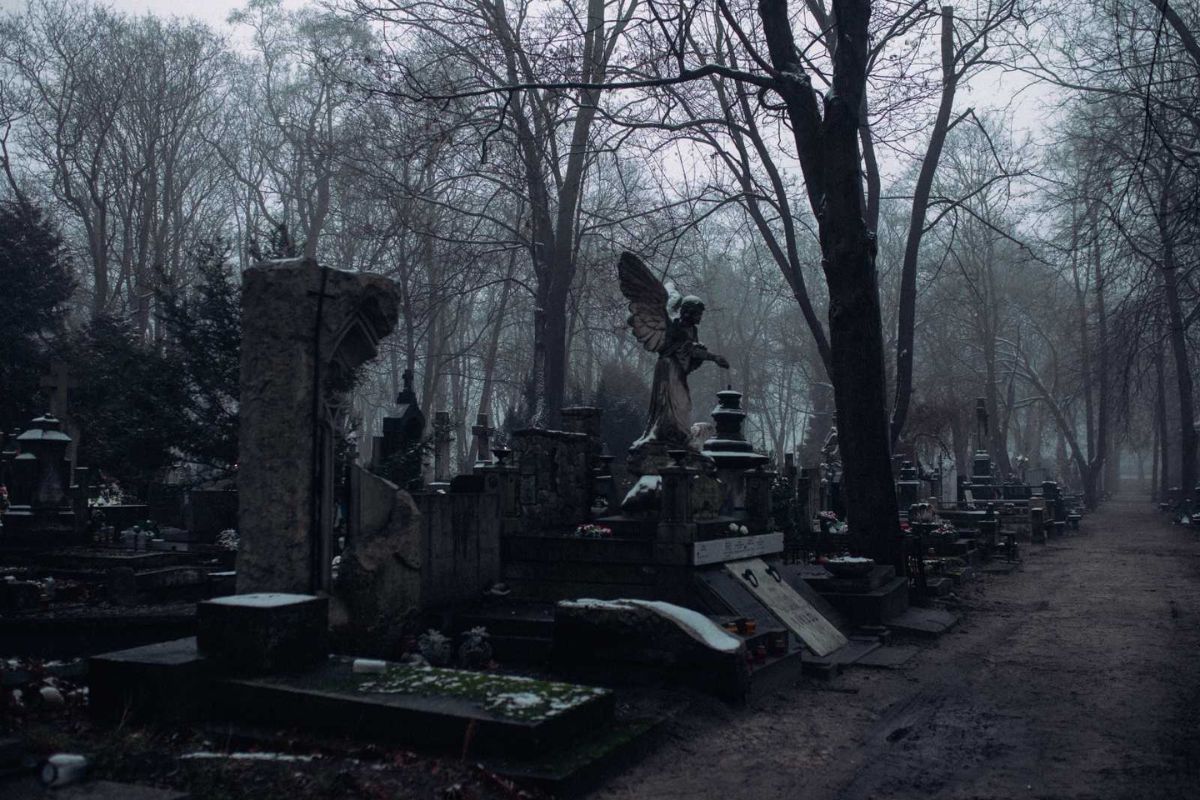
Mysterious and eerie doors to the world of the dead open on Halloween and Samaín.
The Fusion of Samaín and Halloween
In more recent times, the celebration of Halloween emerged in North America, coinciding in the calendar with the Celtic Samaín festival. This has created a bit of confusion on the topic, but let’s set the record straight.
According to the dictionary, the term “Halloween” is a shortened form of “All Hallows’ Even” or “Eve of All Saints,” that is, the night of the deceased. It should be noted that the current Halloween and the ancestral Samaín are celebrated on the same dates. On the other hand, we must also consider the Celtic cultural connection that Irish and English settlers brought to the present-day United States. One thing led to another, both events merged, creating a perfect breeding ground for a good (con)fusion.
There are common elements between both celebrations, apart from the date. As mentioned above, during Samaín, spirits crossed into the world of the living. To keep them content, food was left outside homes, a result of the summer harvest. This evolved into what we now know as “trick or treat” on Halloween, where children, dressed as spooky beings, ask for sweets from houses.
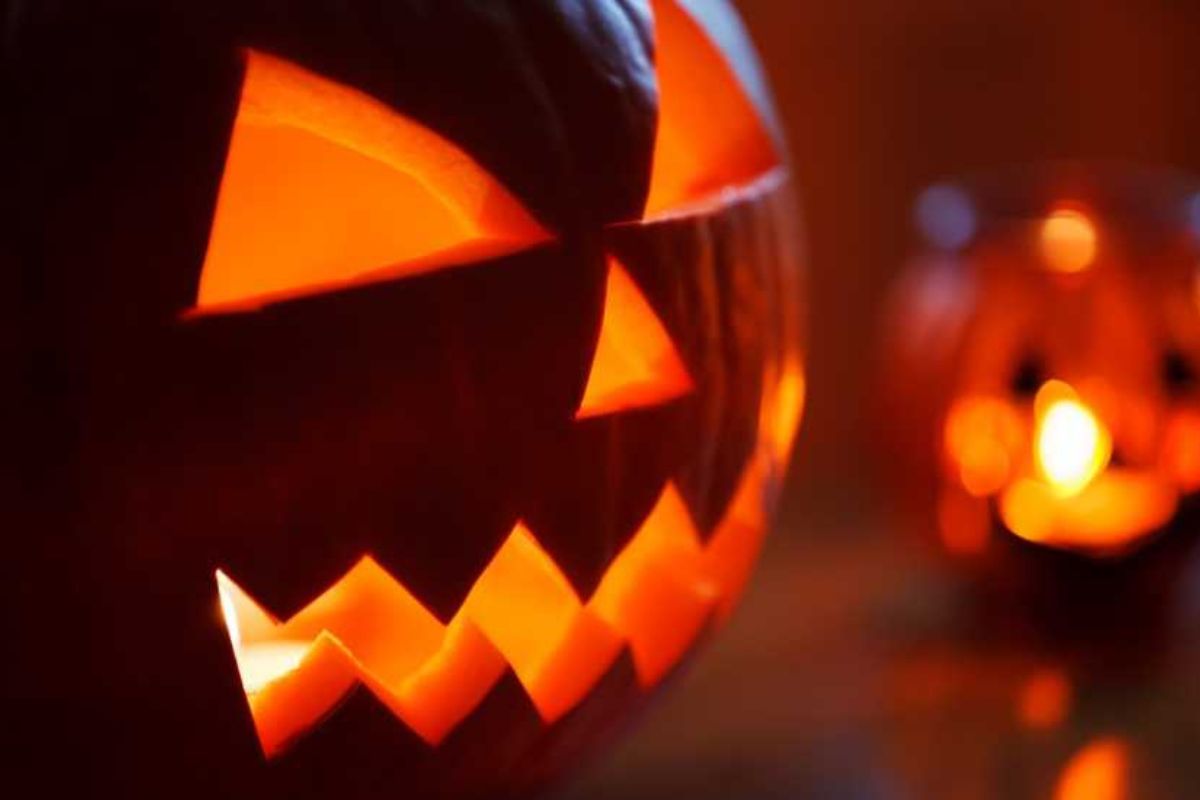
The Halloween pumpkin or “Jack o’lantern,” a typical decoration of this season.
Mythological Beings and Legends of Galicia during Samaín
In Galicia, mythological beings and legends are part of everyday life, but they gain much strength during this time of year. Stories of spirits and mythological characters, told around bonfires, create a truly magical atmosphere. Don’t be surprised if you hear about dogs barking at night when someone dies. Or if you hear stories about witches or “meigas.” And you’re probably familiar with those eerie processions of souls in torment, like the Santa Compaña, right?
Mythological Beings
Among the Galician mythological beings, meigas stand out, along with bruxas (witches), trasgos, and mouros. Contrary to what many people might think, a meiga is a mythological being of light that does good. They protect other beings from witches, who would be the evil witches we all know.
These beings are not exclusive to Galicia, as they also exist in northern Spanish regions such as Asturias, Cantabria, the Basque Country, and León. But perhaps the main protagonists of the Galician Samaín are the “friends” of the Santa Compaña, one of the most well-known legends in Galician culture.
Legend of the Santa Compaña
The Santa Compaña is a procession of souls from Purgatory. Dressed in black with hoods, they wander through the night in Galician forests and paths carrying a candle. They are not visible, but they are recognized by the smell of burning wax from the candles in the air. Additionally, in their wake, animals become restless, and the forest becomes calm.
It is said that they walk barefoot in two rows, and at the front of the souls is a larger specter called Estadea. Leading the procession is a mortal condemned to wander, carrying a cross and a candle every night. The next morning, this mortal remembers nothing from the previous night, and their extreme paleness and thinness are the only recognizable signs of their situation. As the light they carry at night becomes stronger, the person languishes until they die.
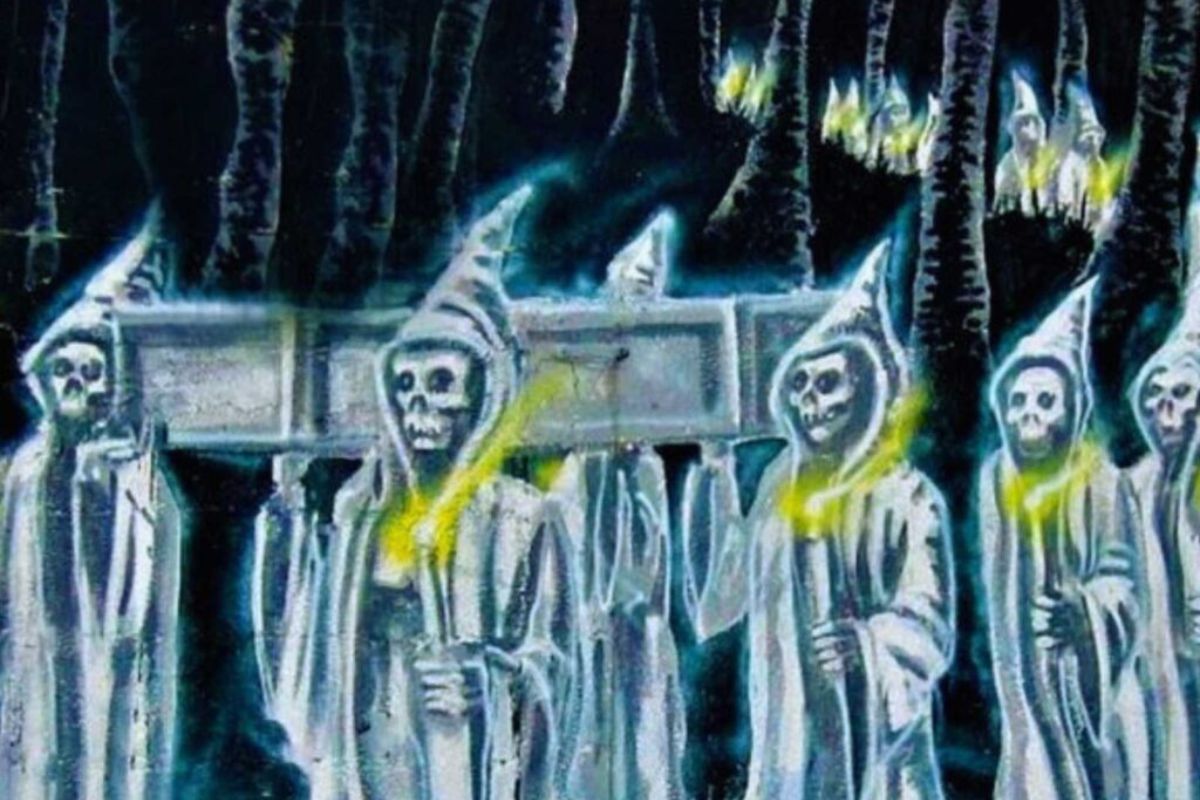
The Santa Compaña, a grim legend of Galicia.
How to Avoid and Free Yourself from It?
If you want to avoid being taken, there are several solutions to free yourself from it. Carrying a cross and praying, taking refuge in a “cruceiro” (a stone cross typical of Galicia), or making a circle on the ground and stepping inside while closing your eyes will be your salvation. But if it catches you, the only possibility of freeing yourself from this curse is if the procession crosses paths with another unsuspecting mortal. Like a relay race, this person would become the new victim, and you would pass on the role of opening the procession.
A Pilgrim’s Samaín
If you’re planning to walk a Jacobean route during this autumnal period, you’re in for a terribly unforgettable experience. The Jacobean paths transform into palettes of beautiful autumn colors, with a very special light. However, seek that light and protect yourself from the darkness, lest it be the devil…
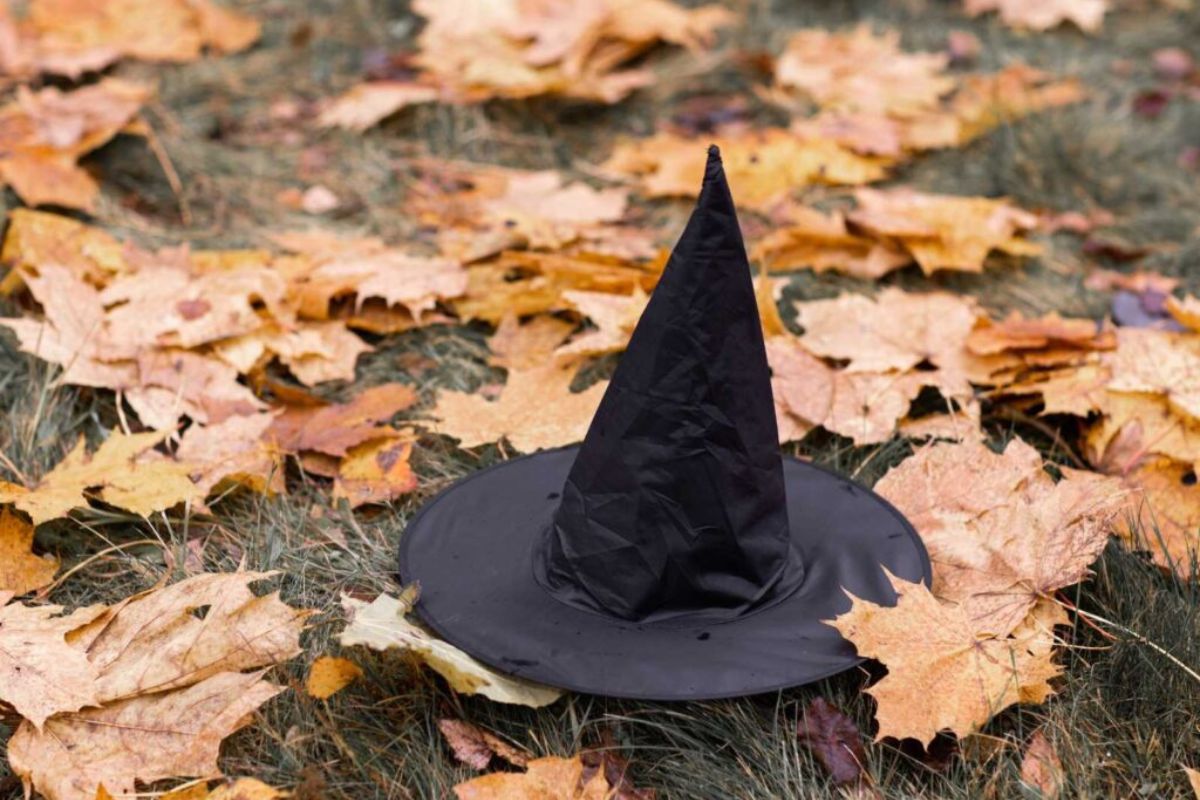
Who knows, you might even encounter a witch on your Camino on Halloween.
Enchanted Jacobean Routes
The best routes of the Camino de Santiago between October and November are the French Way and the Portuguese Way, well-signposted and with many services. The same goes for the Portuguese Way along the Coast, with the beautiful Atlantic Ocean always to the west. As you progress through the forests of Galicia, you immerse yourself in the natural beauty of the region and encounter small villages. In these places, many of which still preserve Samaín traditions, you can personally experience this magical night.
If you also want to enjoy the sea, the Northern Way and the English Way, with their particular enchanted forest, are also excellent options. And if you want an epic sunset, we propose the Finisterre and Muxía Way at the End of the Celtic World.
Advantages of Pilgrimage on Halloween
The week of Halloween or Samaín is a very good time to walk the Camino de Santiago in autumn. There are still no extreme temperatures and rains, although you should be prepared for anything. There won’t be many pilgrims along the route, and although many accommodations begin to close for the season, with proper planning, you will always find a place to sleep.
And of course, a safe bet during this time: Galician cuisine, a delight for the senses and protection against the cold. Dishes like caldo gallego (Galician broth), stews, empanadas, and filloas are served on festive tables, accompanied by good local wines. As a grand finale, an unsettling queimada to ward off evil spirits. And let’s not forget, you can’t miss the famous roasted chestnuts, a traditional delicacy of the season.
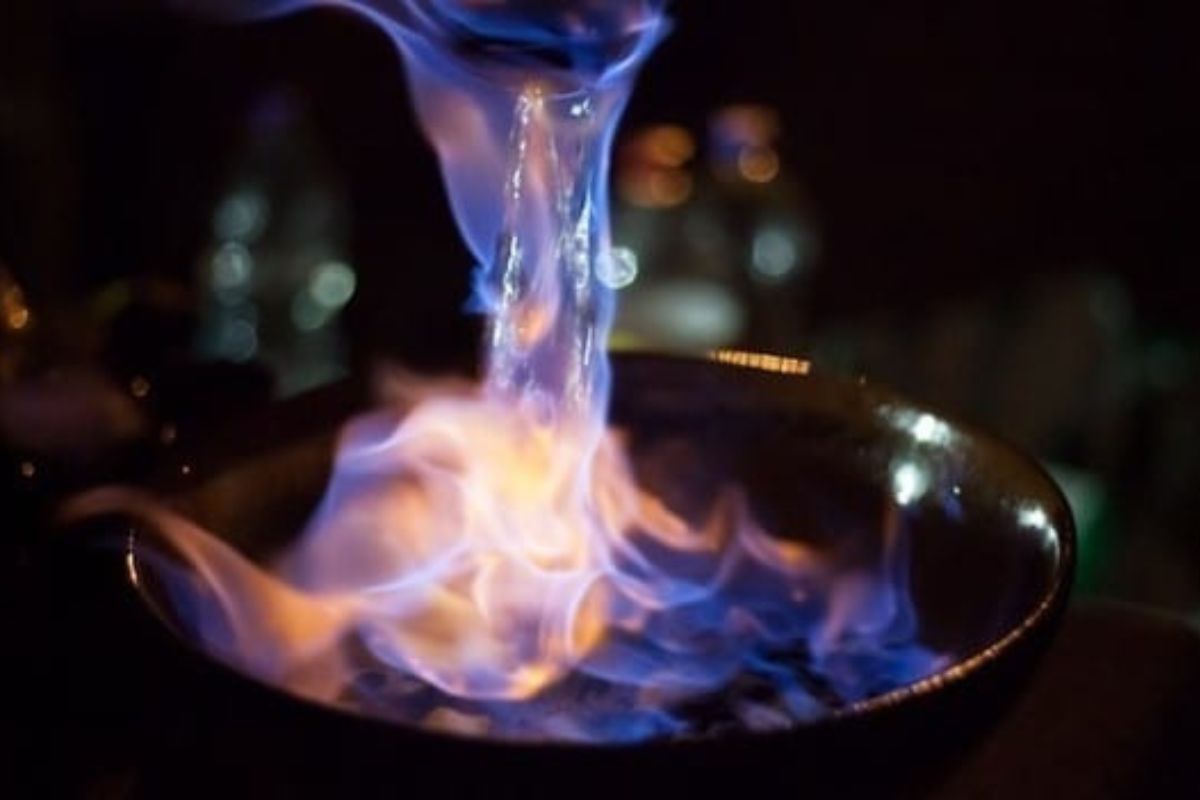
A good Galician “queimada” will take away the cold and protect you from evil spirits on Halloween.
Tips for Enjoying the Camino de Santiago on Halloween
If you’re thinking about walking the Camino de Santiago on Halloween, here are some useful tips:
- Decide which route to take: plan which route and how many stages to walk;
- Book accommodations in advance: there are few pilgrims, but there’s also somewhat less accommodation availability;
- Prepare your backpack and attire properly: good footwear, warm and thermal clothing, changes of clothes, and water-resistant garments;
- Explore villages and local culture: take the time to explore the small villages on your route and participate in local celebrations.
If you want more advice for walking the Camino, feel free to contact us without any obligation. We’ll be happy to help you and alleviate your fears.
On Halloween, at dusk, beware of the Santa Compaña.
There you have it, dear pilgrim. Imagine walking the paths of Galicia on a late October and early November evening. The leaves crunch beneath your feet, and the air is filled with a mysterious charm. Listen to the legends that will envelop you as you walk along paths or enjoy the delicious local cuisine and culture.
Walking the Camino during these holidays is a unique experience that combines the cultural richness of Galicia during Samaín and the celebration of Halloween. This journey will leave you with unforgettable memories and sensations. So, pack your backpack, and embark on this magical experience along the Camino de Santiago during this special time!

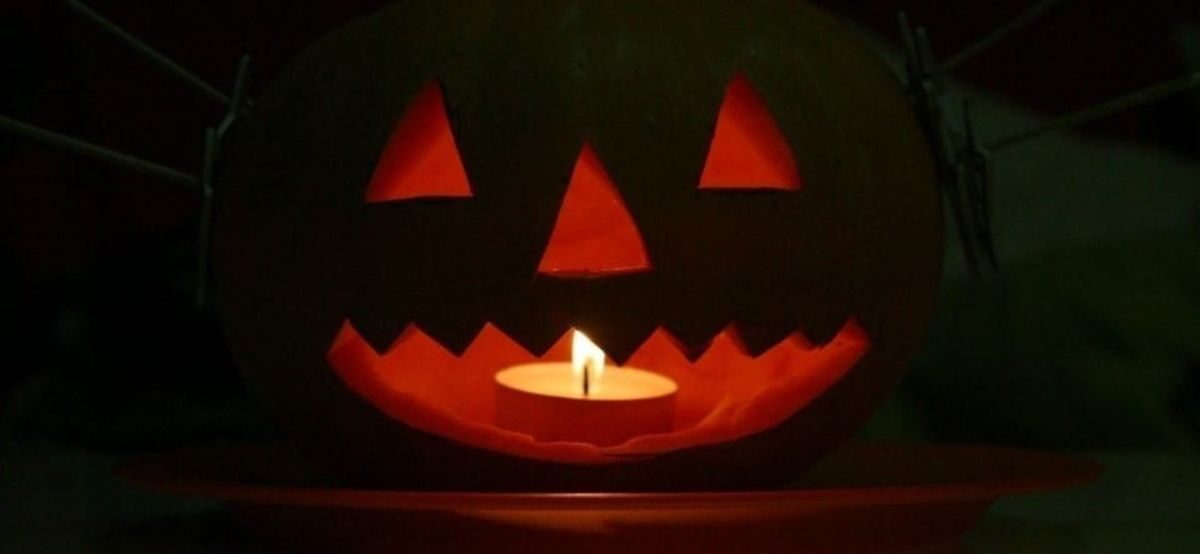


Leave A Comment